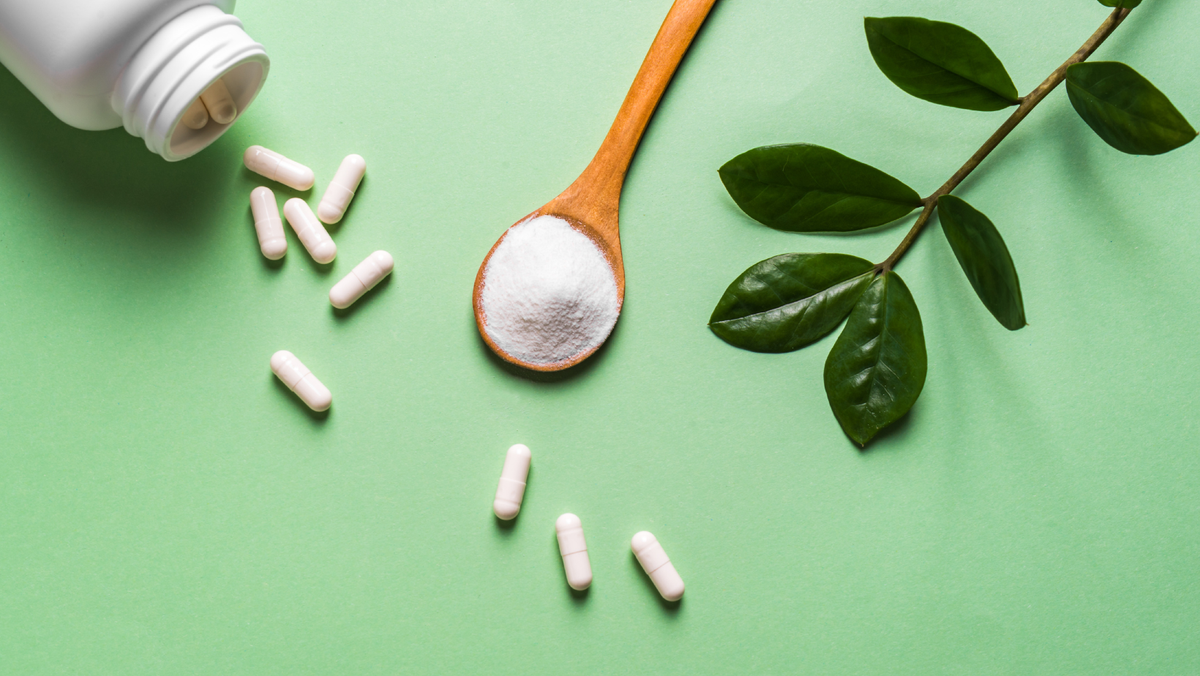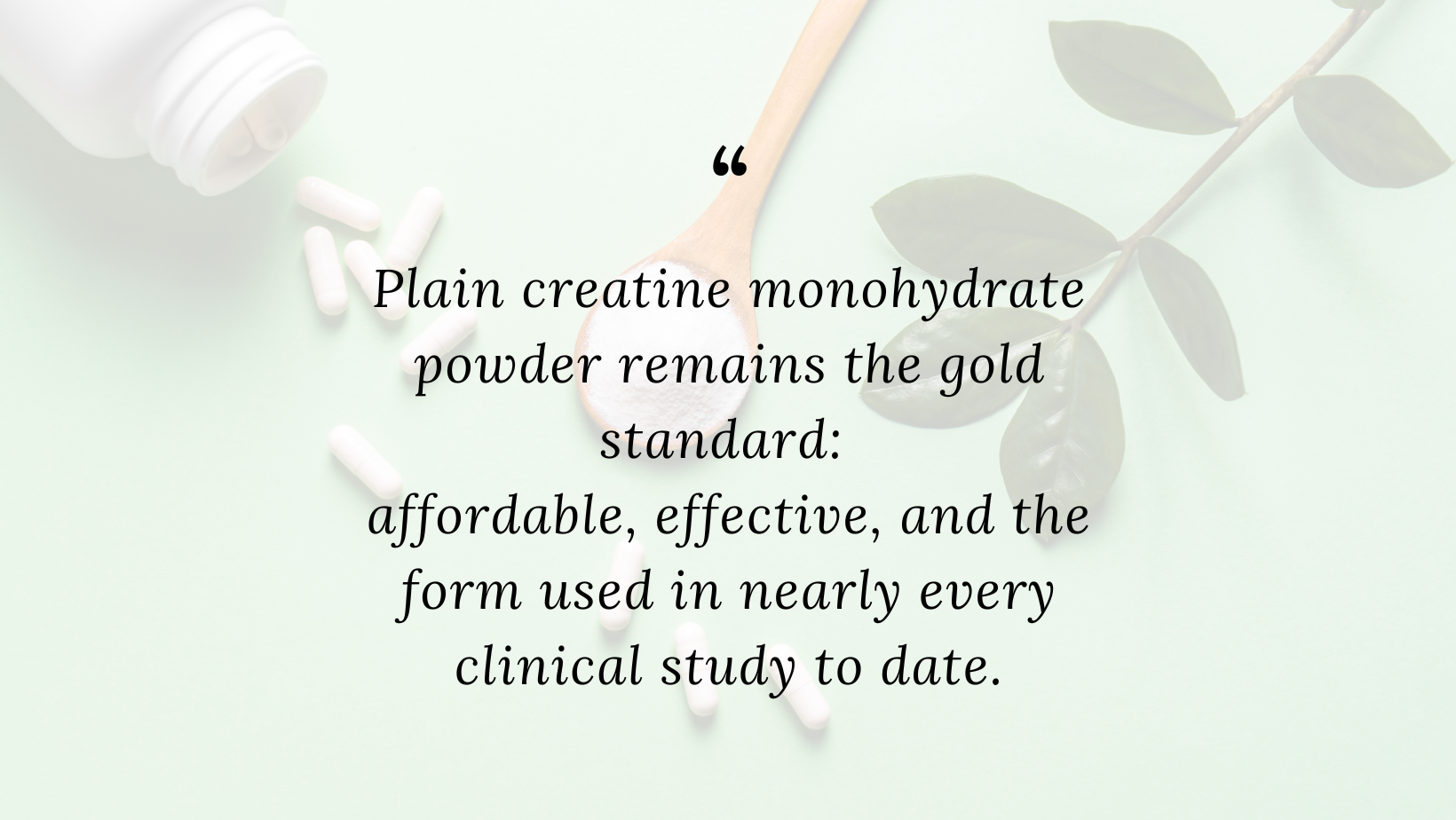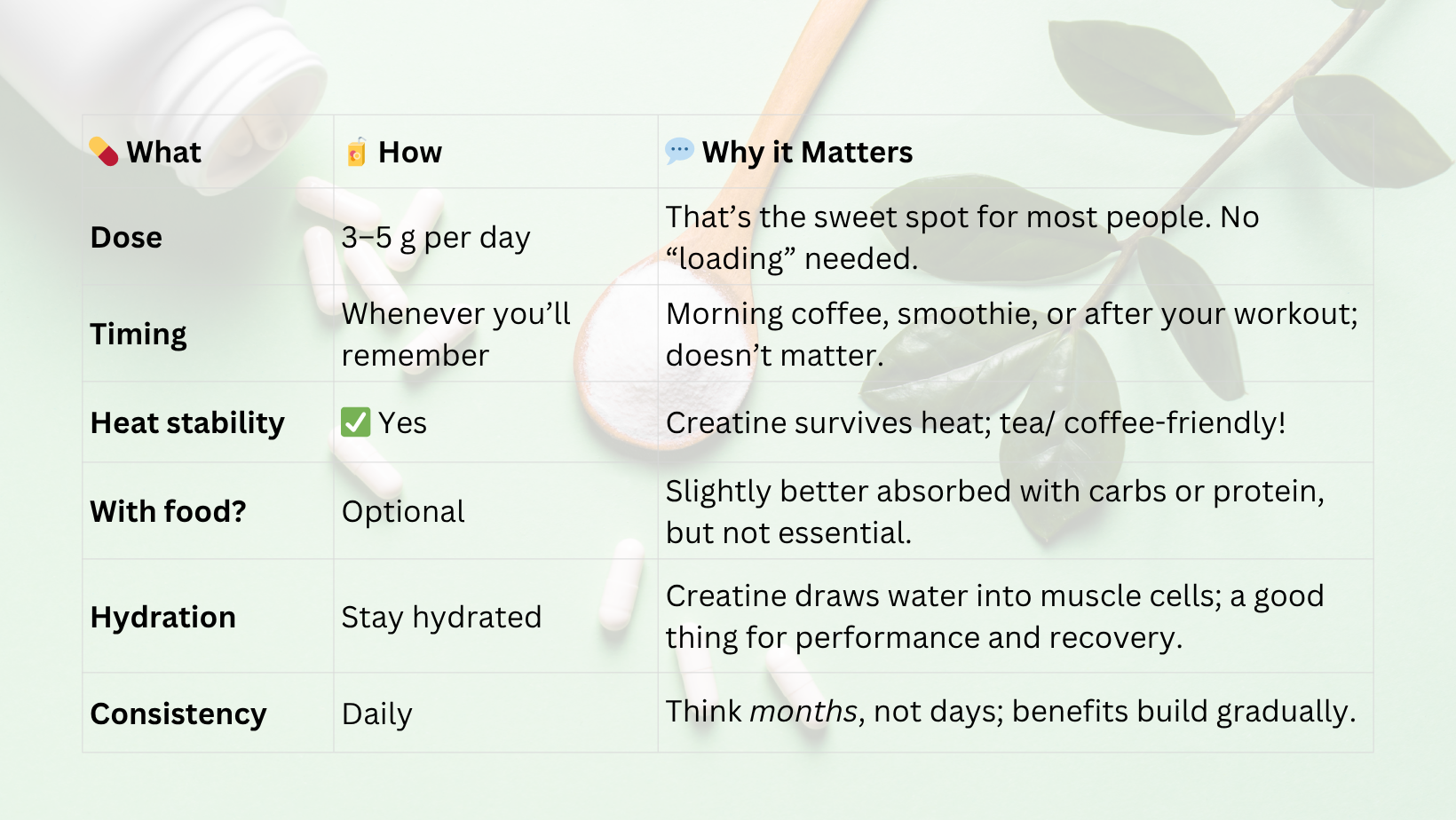So… Should I Be Taking Creatine?

Last week, after a workshop, a woman came up to me, baby strapped to her chest, eyes bright but clearly sleep-deprived, and asked,
“So… what’s the deal with creatine? Should I be taking it?”
Her question made me smile. Not just because I love when women are curious about nutrition science, but because it reminded me how much confusion still exists around supplements that have quietly earned their spot in everyday health.
So today’s newsletter is a little recap and an update on why creatine isn’t just for gym bros anymore, and why I believe it deserves a second look.
1. Beyond the Gym: New Health Applications
Creatine has been studied for decades, but its story keeps expanding.
It’s now being explored for benefits that go far beyond muscle, including:
- 💭 Mood and cognition: Helping your brain perform under stress (hello, new motherhood, perimenopause, deadlines…).
- ⚡ Brain energy metabolism: Creatine acts as a quick energy reserve, like a backup battery when your cells need an extra charge.
- 🧬 Neuroprotection: Emerging (pilot) studies show potential benefits in Alzheimer’s and age-related cognitive decline.
- 🦴 Bone and heart health: Still early days, but the data are promising.
In short: creatine is shifting from a “fitness supplement” to a whole-body nutrient.
🧠 2. The Brain Gains Keep Coming
Recent research continues to show that creatine can support focus, memory, and mental energy, especially in people who are stressed, sleep-deprived, or low on estrogen.
Some small clinical trials even report benefits for older adults and people with mild cognitive impairment, likely because creatine helps neurons stay charged and communicate better.
Interestingly, one new study found no extra muscle gain beyond what good resistance training already provides, but higher doses (above the classic 3–5 g/day) might offer more cognitive benefits.
So while the fitness world debates reps and protein timing, the brain crowd is quietly saying,
“We’ll take that creatine, please.”
🍬 3. Supplement Innovation Is Getting Fancy
Of course, the supplement market never sits still.
We’re seeing creatine beadlets, gummies, and functional foods popping up everywhere, all promising better absorption or convenience.
But if you ask me, you can skip the sparkle.

If you like your morning coffee warm and simple, good news, creatine is heat-tolerant. Just stir and sip.
🩺 4. Safety: Still Rock Solid
This is one of the most reassuring parts of creatine’s story.
Across hundreds of studies, including research in older adults, children, and clinical populations, creatine remains remarkably safe.
No kidney damage.
No dehydration risk.
No statistically higher side effects than placebo.
The worst you might encounter? Mild bloating or digestive discomfort if you start too fast without enough water.
Otherwise, it’s one of the most boringly safe supplements out there and that’s a good thing.
⚖️ 5. How to Take It (Without Overthinking It)

And just like that mom at the workshop, juggling feeding schedules, fatigue, and curiosity, consistency is often the hardest part.
So find a moment that fits your rhythm, and make it a quiet daily ritual.
💬 Final Thoughts
Creatine isn’t a trend.
It’s one of those rare supplements that’s stood the test of time, not because it’s flashy, but because it works.
For women, especially through life’s shifting seasons, it can be a gentle ally for energy, focus, and strength when our reserves run low.
So the next time someone at your office, or playgroup, or friends asks,
“What’s the deal with creatine?”
you’ll know the answer:
It’s small, steady, and surprisingly powerful, kind of like us. 💛
